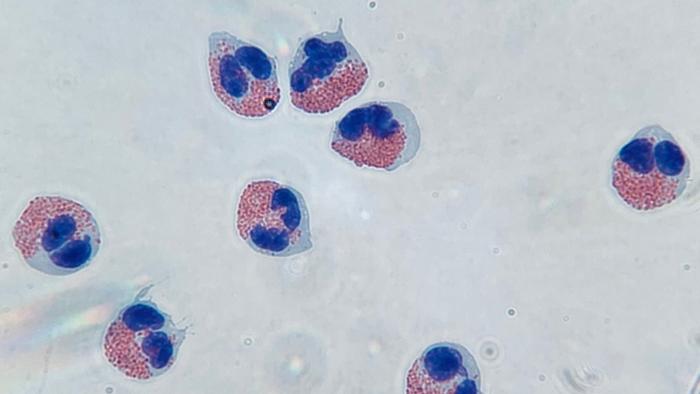Eosinophils, the red-staining cells of our immune system, have long been a source of intrigue for researchers and clinicians alike. Though they account for a mere 3% of our white blood cells, these enigmatic cells play crucial roles in regulating fat metabolism, tissue repair, and combating infections and cancers. However, when eosinophils become too abundant, they can also contribute to common diseases such as allergic asthma and rhinosinusitis.
The Quest to Understand Eosinophil Development
Researchers at the Laboratory of Cellular and Molecular Immunology (LCMI) of the University of Liege, led by Fabrice Bureau and Christophe Desmet, set out to better understand the origin of eosinophils and the effects of treatments targeting them. “These questions previously suffered from a too rudimentary definition of the eosinophil development pathway in our bone marrow,” explains Christophe Desmet.
Doctoral students Joseph Jorssen and Glenn Van Hulst combined their expertise in bioinformatics and flow cytometry to analyze the surface protein and messenger RNA composition of eosinophils at various stages of development. Through collaboration with the Hematology Department of Liege University Hospital and GIGA, they also mapped eosinophil development in human bone marrow, revealing its conservation through evolution.
Challenging Conventional Wisdom on IL-5
The study’s findings challenge the prevailing belief about the role of Interleukin-5 (IL-5), a signaling protein essential for eosinophilia. While most researchers and clinicians thought that IL-5 promoted the maturation of cells destined to become eosinophils, the LCMI team’s work suggests the opposite.
“Our study actually supports the opposite hypothesis,” says Christophe Desmet. “IL-5 slows down the maturation of developing eosinophils, allowing them to multiply longer.” This process, known as “transit amplification,” promotes eosinophilia, and IL-5-targeting treatments reduce it by inhibiting this process.
The LCMI study provides valuable resources, methods, and perspectives for understanding the origin of eosinophils, the effects of current precision therapies, and the regulation of eosinophil development and numbers in both normal and disease conditions. As researchers continue to unravel the mysteries of these intriguing cells, their findings may lead to more targeted and effective treatments for eosinophil-associated diseases.


